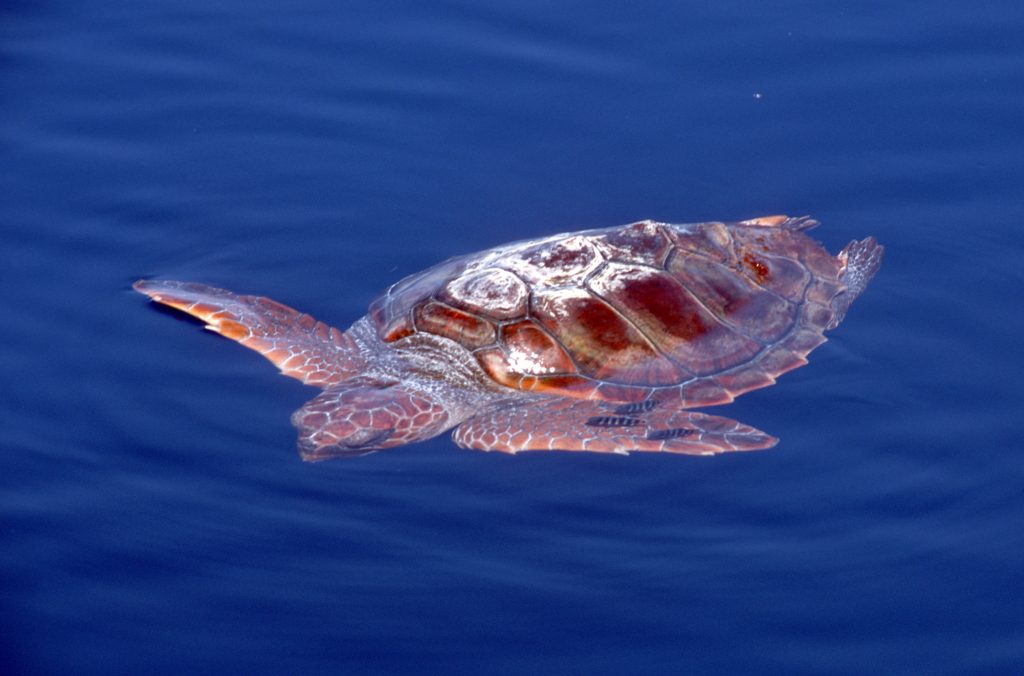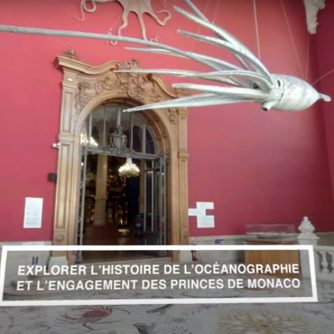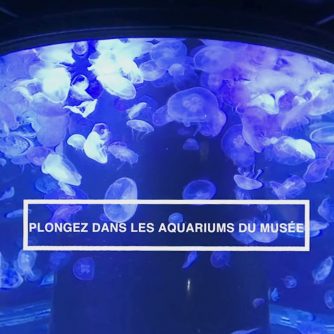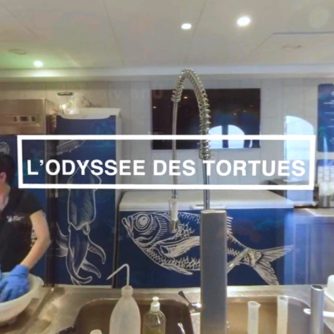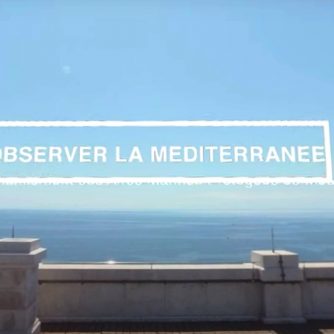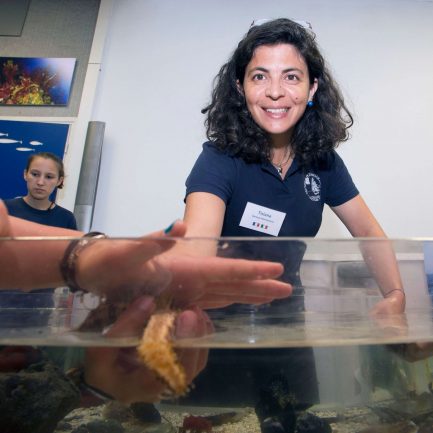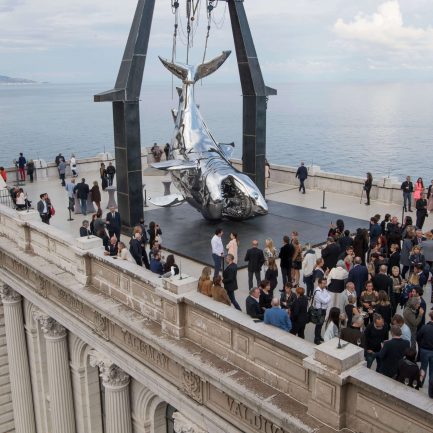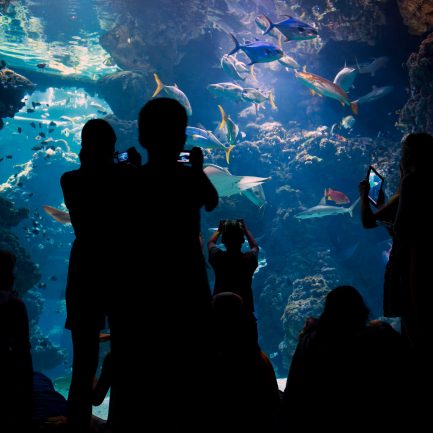The Odyssey of Sea Turtles
- Home
- Actualités
- Chapter 4 – The Turtle Odyssey
Close to the protection actions
of the Oceanographic Institute.
The steps of your virtual visit
Points of interest :
The turtle odyssey
The great adventure of marine turtles is told at the Oceanographic Museum, in a new 550 m2 space. The museum is expanding for the first time in its 110-year history
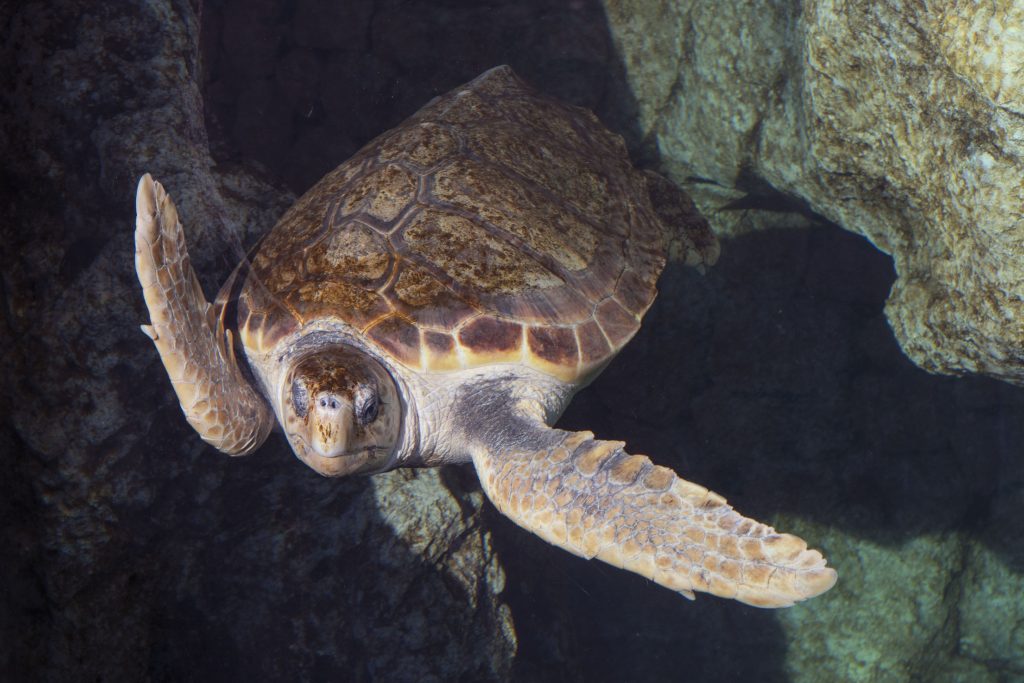
The kitchen
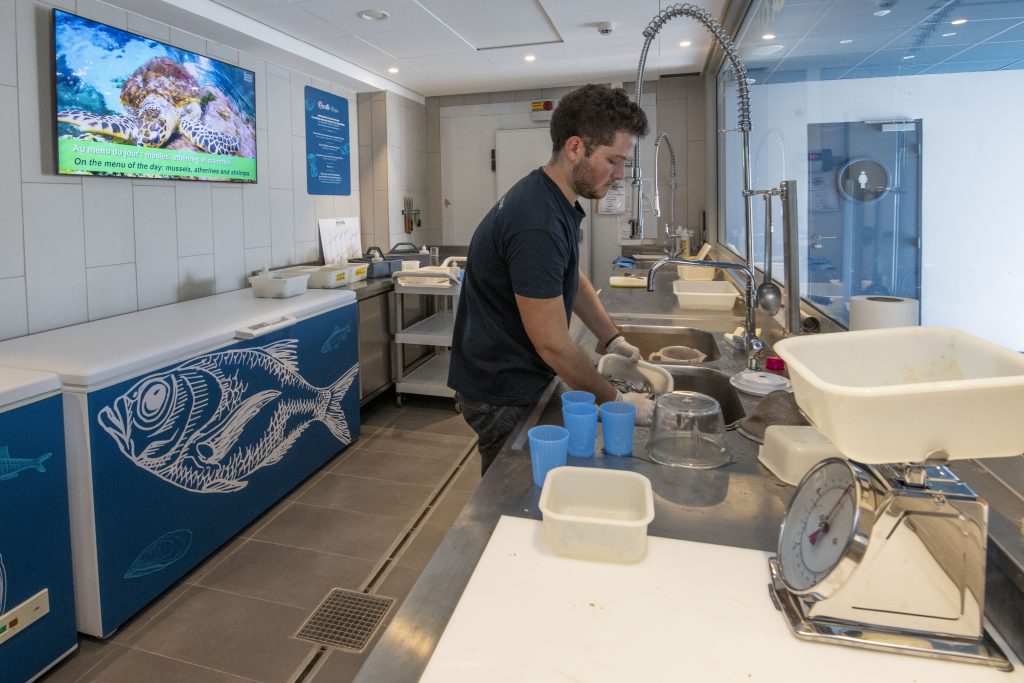
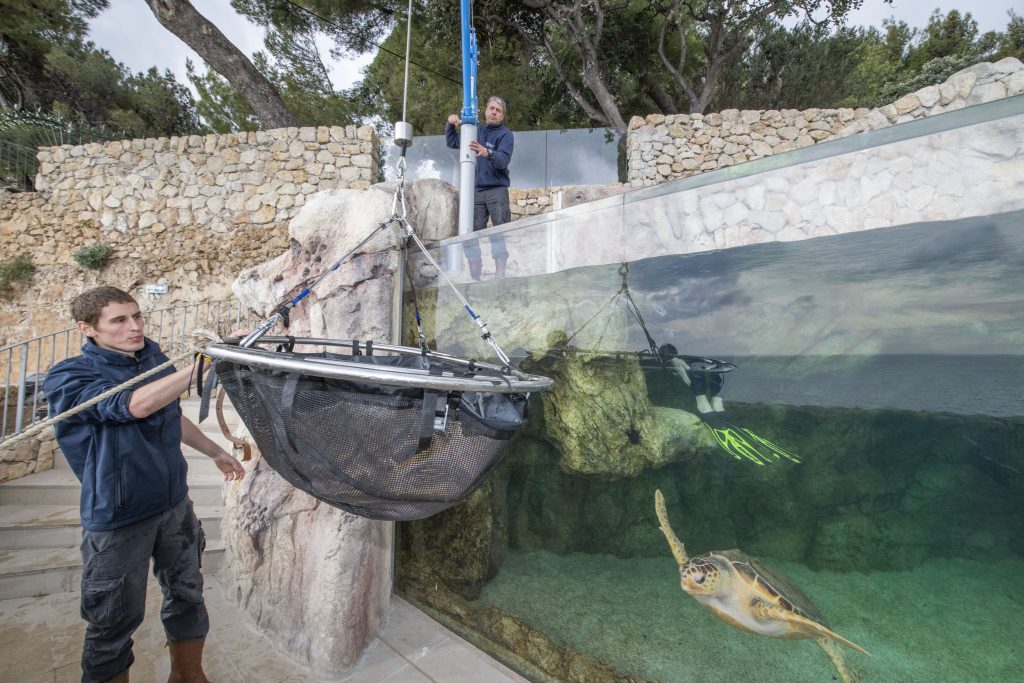
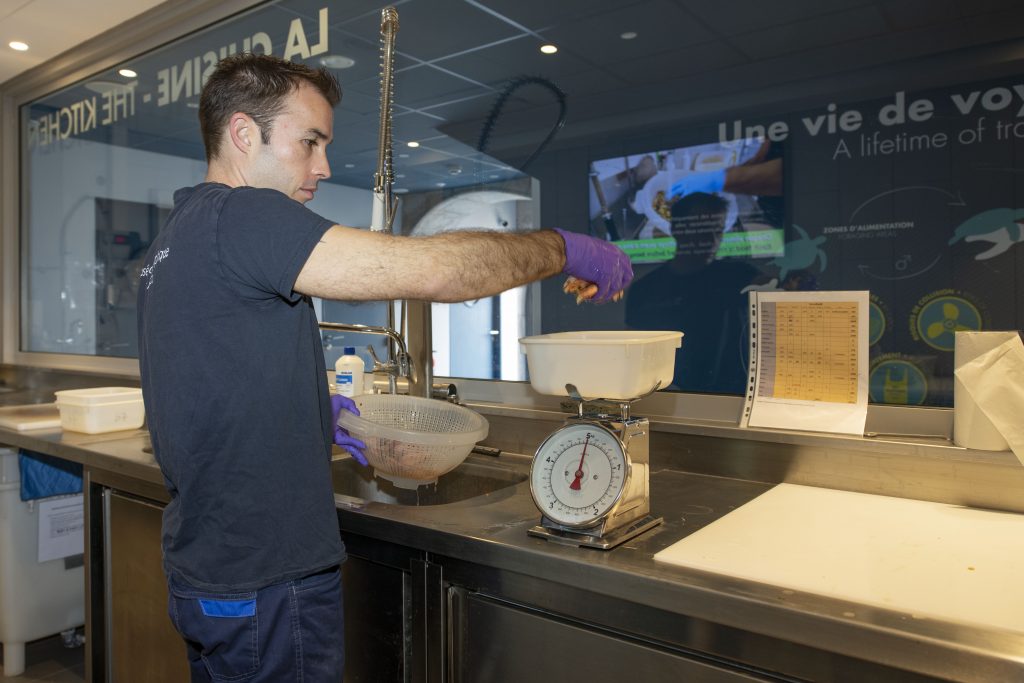
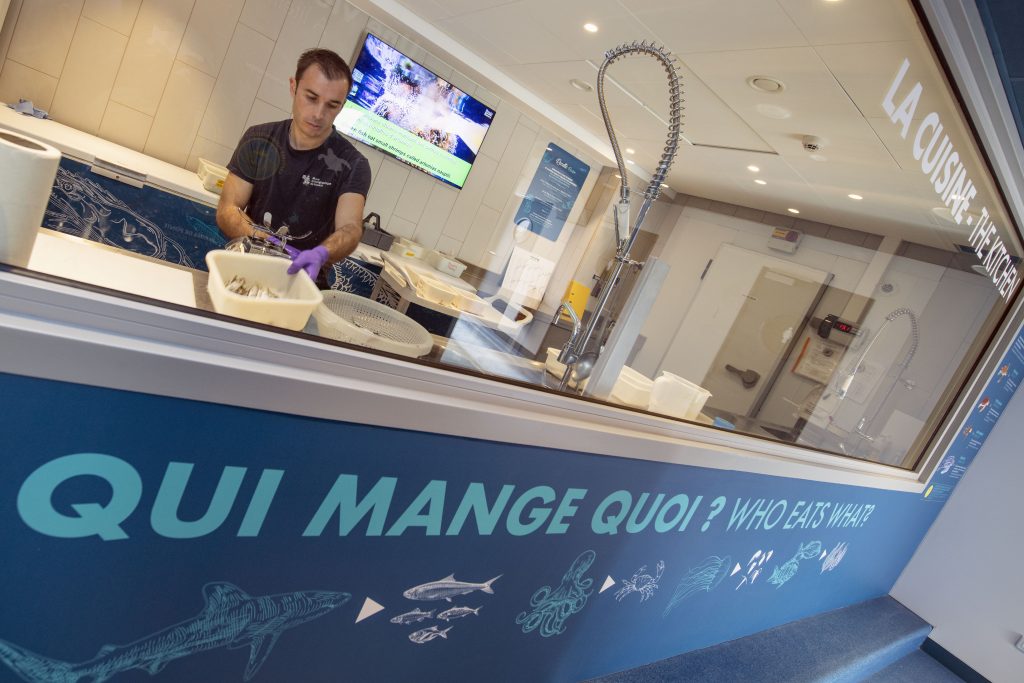
Ask for the menu! Mussels, oysters, sardines, fish fillets, krill, salads, it is a real feast that is prepared here every day for the aquarium’s residents. Each pond receives a specific food adapted to the needs of the animals. The distribution of food is always a moment appreciated by the aquarium technicians who make sure that everyone eats to his end and according to his needs!
The health centre
The Monegasque Marine Species Care Centre (CMSEM): equipped with 5 pools of different sizes, the care centre is perfectly adapted to receive turtles recovered from injuries sustained at sea following a collision with a boat, accidental fishing or
problems related to the ingestion of waste such as plastic bags. Totally independent from the rest of the aquarium, the CMSEM is managed by specially trained caretakers who are authorized to handle sea turtles!
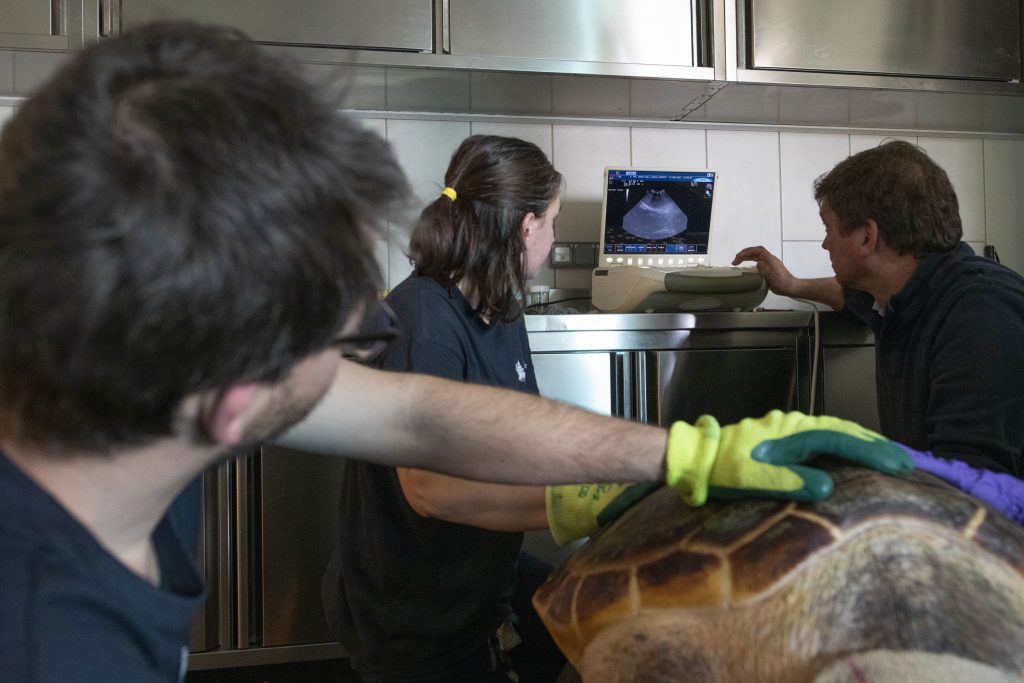
The rehabilitation basin
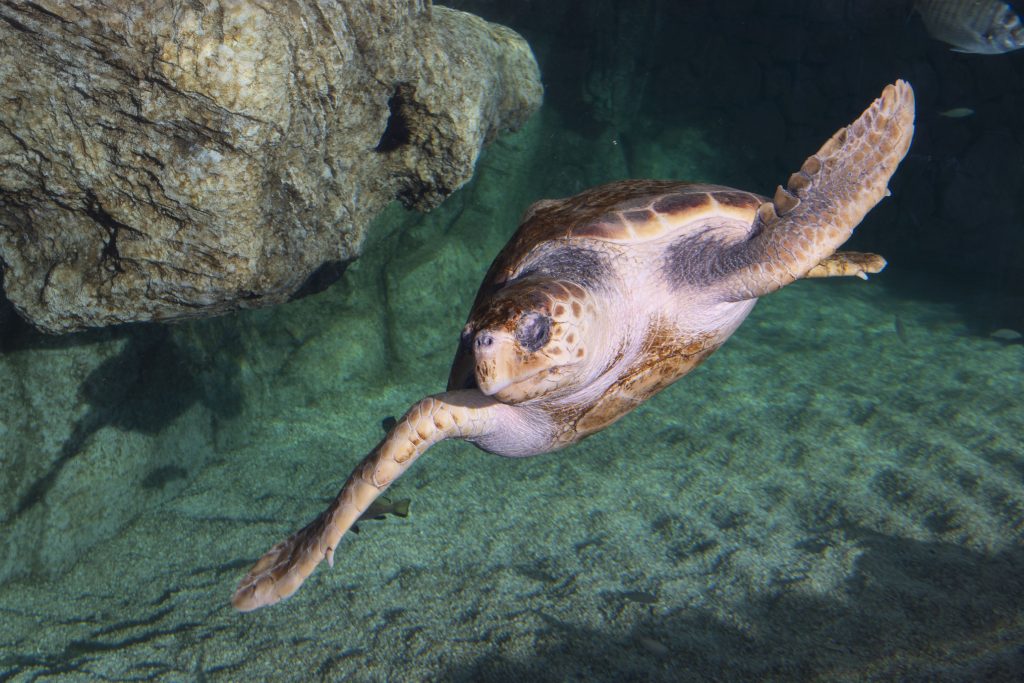
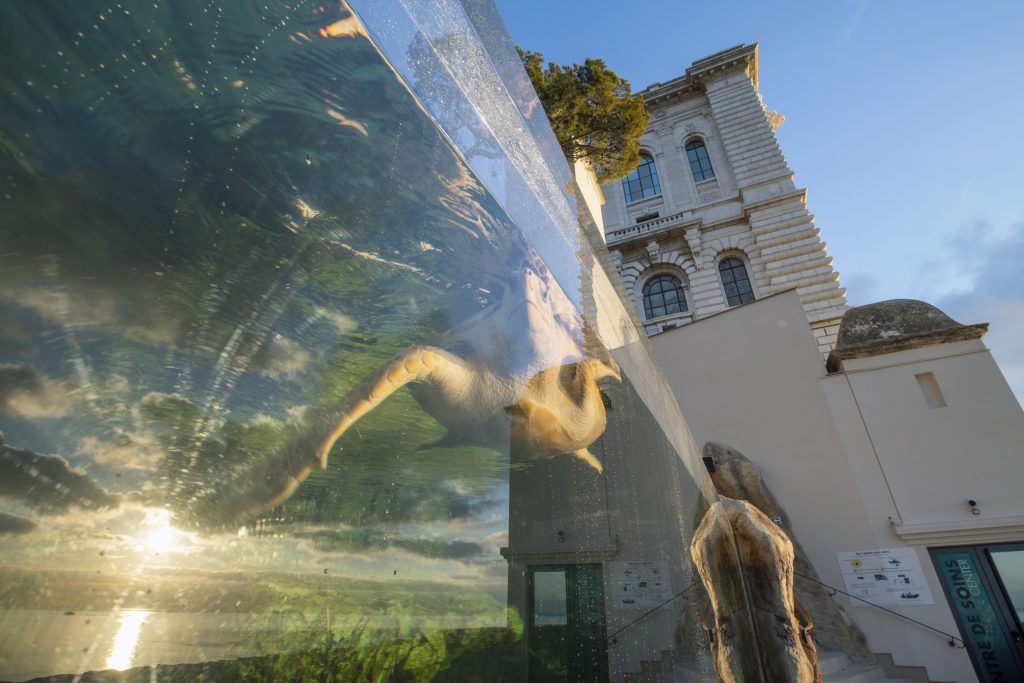
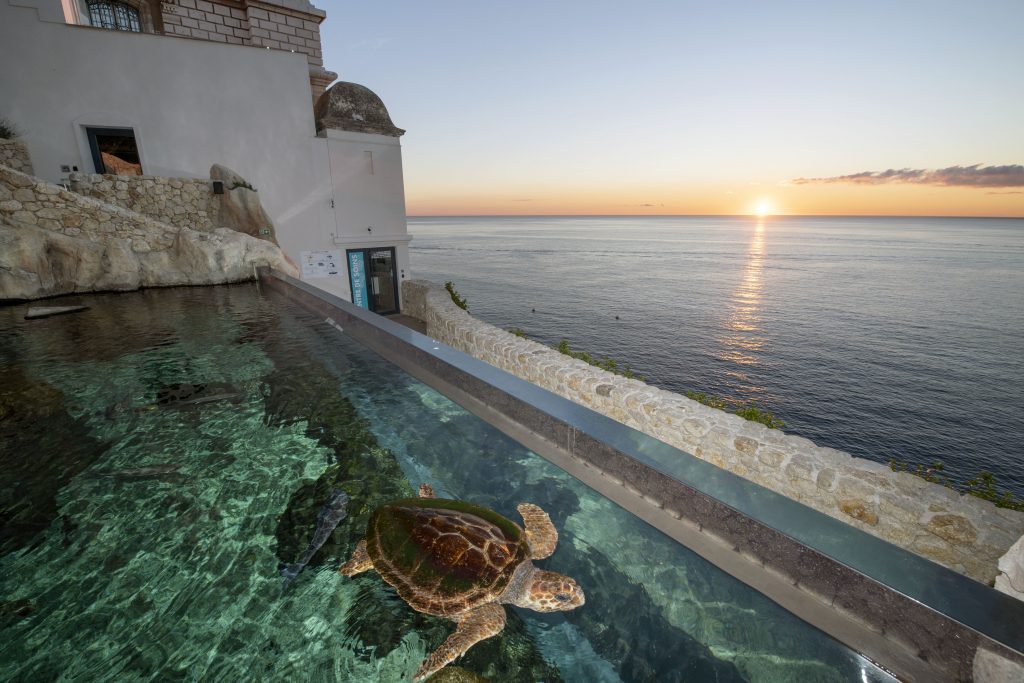
Entirely dedicated to the marine turtles of the Mediterranean, this tank has a double vocation: to allow visitors to meet these marvellous and so intriguing animals, but also, to welcome the wild turtles at the end of their care, before their return to the sea. It is currently home to two loggerhead turtles(Caretta caretta), the most common turtles found in the Mediterranean. They were born in Marineland in Antibes and are not meant to go to sea. They are our best allies in making you aware of the cause of their wild congeners which are more than ever threatened by human activities.
Marine turtles
There are 7 species of marine turtles in the world, 3 of which are found in the Mediterranean: the loggerhead turtle(Caretta caretta), which is the most common, the green turtle(Chelonia mydas) and the leatherback turtle(Dermochelys coriacea). Migratory animals, the turtles travel thousands of kilometers to feed themselves but especially to reproduce and then come to lay eggs on the beaches, a rare phenomenon to observe on our coasts but unforgettable
